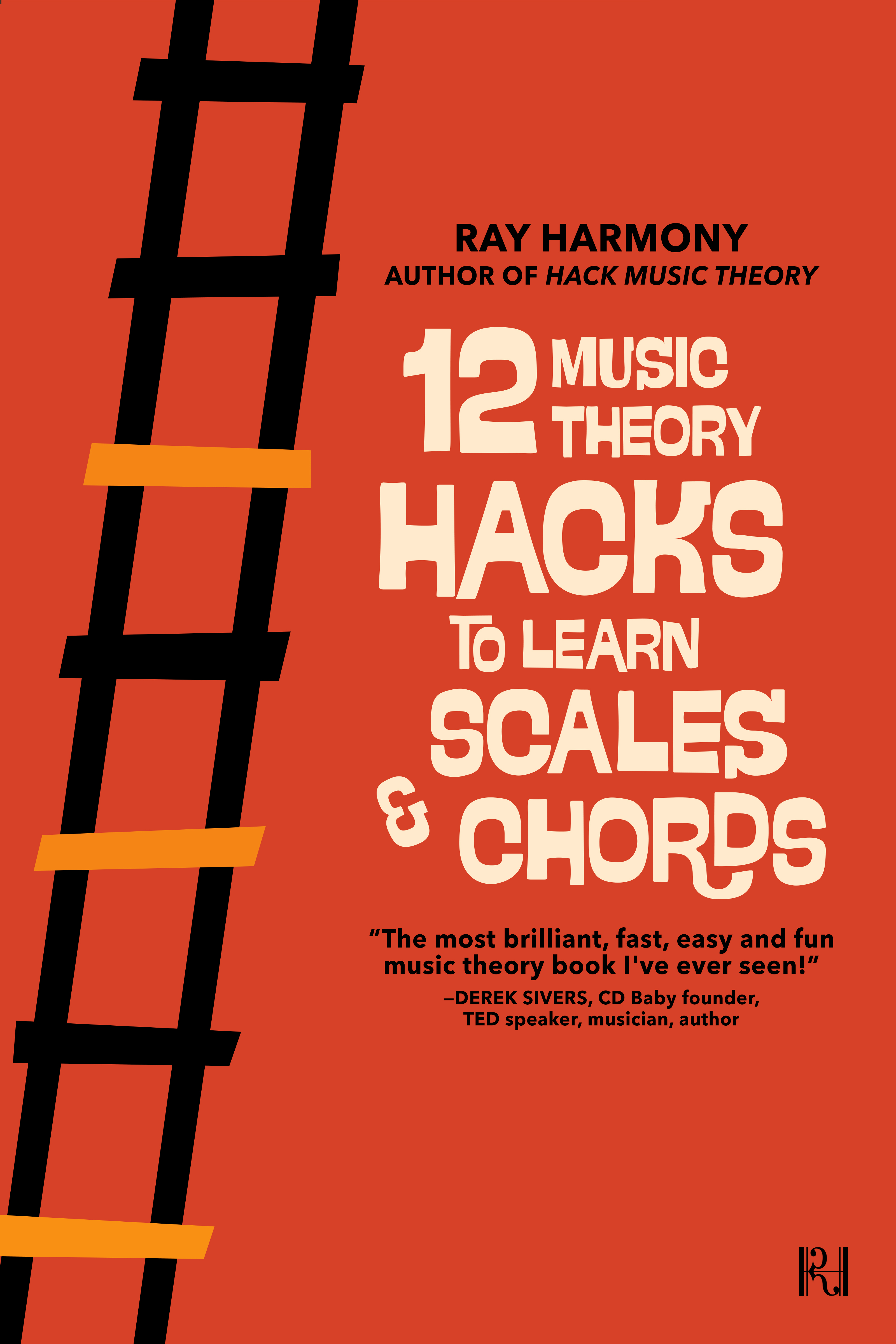In this Hack Music Theory lesson, you’ll learn how to write a bass line that hooks your listeners into your song within seconds. But first... Tea!
Hello, we are Kate Harmony & Ray Harmony (AKA Revolution Harmony), and welcome to the Hack Music Theory show, where you are empowered with notation-free theory for making great music in DAWs.
A great intro is a musical tease! It reveals very little of the song, while totally hooking us in to ensure we keep listening. Think of an intro like a trailer for a song, and just like movie trailers, there’s three types: 1) the trailer that’s so desperate for you to watch the movie, it gives everything away, but now you don’t need to watch the movie. 2) the trailer that’s attempting to lure you in with a mysteriously abstract taste, but you have absolutely no idea what the movie is actually about, so you don’t watch it. And finally, 3) the “goldilocks” trailer that acts as a window through which you glimpse the movie, but now you have questions, and if you wanna know the full story, you’ll need to watch the full movie!
HACK 1 - One. Two. Boo!
The ultimate goal for every intro is to give away enough to keep people listening, while also holding back enough to maintain their interest till the end of your song. And the way to achieve this is through our easy psychological hack: One. Two. Boo! Here’s how it works. Create a simple pattern that your listeners can instantly follow, and then repeat it once - this will trigger their brains’ reward system, as they’ll correctly predict the recurrence of your pattern. But then, at the end of your second loop, vary the pattern unexpectedly. And boo! Thanks to a good dose of dopamine, your listeners are now mentally and physiologically hooked into your song! And as you can see, our simple pattern consists of a couple long F♯s (our root note), played on beat 1 and beat 2+, which is a classic hip-hop rhythm. And then on beat 4 we’ve got a 1/4 note rest, which sets up the expectation of that rest recurring at the end of our second loop, but that’s exactly where the unexpected variation hits! Instead of a 1/4 note rest, we give ‘em a couple quick 1/16 notes and a couple 1/16 note syncopations, which is an accenting of the off-beat that pumps up the energy of your rhythm.
HACK 2 - Vary the Variation
The great irony of variation, is that if you repeat it, it’s no longer variation. This is how an unexpected and thrilling variation can quickly turn into a predictable disappointment the second time round. So, in order to deliver another dopamine hit to your listeners, which will keep them listening beyond your intro, you need to vary the variation! Start by looping your “One. Two. Boo!” pattern, and then, on the second “Boo!”, change it up to totally surprise your listeners yet again. And with that, they settle in and take their fingers off that dreaded Skip button! Yeah so you can see our second “Boo!” is completely different to our first “Boo!”. Instead of starting on beat 4, it starts on beat 3e, and instead of going down, it goes up, and instead of going to a diatonic note (a note that’s in the scale), it goes to a very unexpected ♭2, which is a non-diatonic note (a note that’s not in the scale). And finally, for one last massive dopamine hit, we’re gonna bring back this intro after our second chorus (just before the bridge), which will beautifully tie the song together, while also creating a comforting familiarity right before we change things up in the bridge!
EXAMPLE
The example in this video is the intro section from of our upcoming single “Down with the Drama”, which features the amazing Sarah Serene on vocals. If you missed any of our previous videos on this song, check out our YouTube playlist.
MORE
If you want a more in-depth lesson, we suggest our 15-minute video: How to Write a Bass Line
Lastly, do you struggle to finish your music? If you do, then check out our online apprenticeship course, where you’ll learn how to effortlessly write new sections for existing sections, how to transition between them, and most importantly, how to finish your songs! For more info, just head on over to our Apprenticeship Course. Alright, enjoy the video/podcast.
Kate & Ray Harmony (AKA Revolution Harmony)
Music Teachers & Producers in Vancouver BC, Canada
LEARN
1: Read our free book (below) & watch our YouTube videos
2: Read our "Part 1" book & "Songwriting & Producing" PDF
3: Learn how to become a song-whisperer, and effortlessly finish music!
ABOUT
Hack Music Theory is the pioneering notation-free method for making great music. Taught by award-winning music lecturer Ray Harmony, and his protégé (and wife) Kate Harmony, from their studio in Vancouver BC, Canada. Ray is the author of critically-acclaimed book series "Hack Music Theory", and has made music with Serj Tankian (System of a Down), Tom Morello (Rage Against the Machine), Steven Wilson (Porcupine Tree), Ihsahn (Emperor), Kool Keith (Ultramagnetic MCs), Madchild (Swollen Members), and many more. Kate has the highest grade distinction in Popular Music Theory from the London College of Music, and is the only person on the planet who's been trained by Ray to teach his Hack Music Theory method! While these Hack Music Theory YouTube lessons teach music theory for producers and DAW users, they are designed to accommodate all music makers (songwriters, guitarists, etc.) and all genres, from Electronic Music to R&B, Pop to Hip-Hop, Reggae to Rock, EDM/Dance to Metal (and yes, we djefinitely Djent!).
 | |
Wooohooo!!! You’re a mere 30 minutes away from being even smarter than you already are. Just head on over to your inbox now for your free download.
